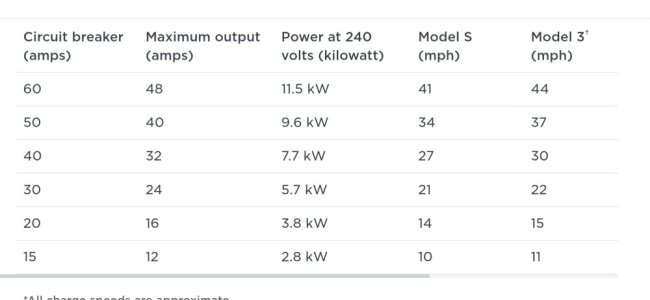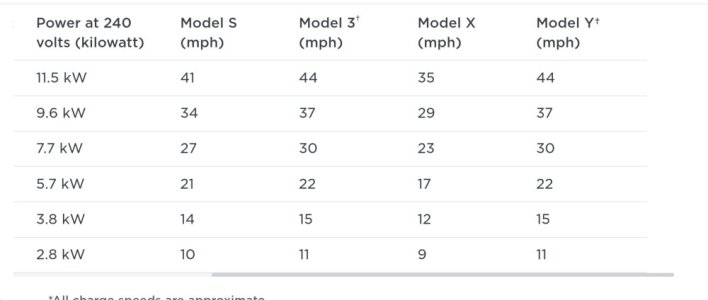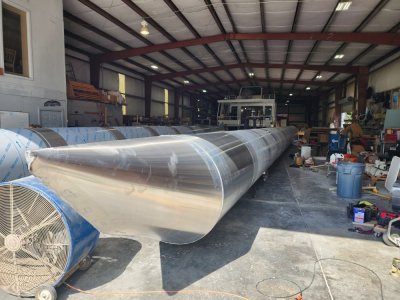You can put in what is commonly referred to as a dryer electrical socket, its 240 volts and has a NEMA 14-50 receptacle. This is what your dryer plugs into. Likely also your oven.
With a Tesla Model 3 this makes sense because the amperage limit of the Model 3 is such that you would not get any faster charge from the Tesla wall mount. But the Model Y has a higher amperage, and so charges faster with the wall mounted charger.
If you ever investigate this check out youtube (or even the blog communities) because many people say, well, if you are charging overnight the difference between the NEMA 14-50 plate and the wall mount charger is negligible. And, some people have successfully put in a splitter at the dryer location so they can alternately use the dryer or charge the car. Also true, I suppose, though I would not try it myself just being unfamiliar with the whole thing and if i did it I have to run the charging cable from the dryer location to the car.
But here's the point I think for most people: the cost to put in the NEMA 14-50 receptacle is going to be about $1250 to $1300 for me. The wall mount, which is easy to identify and popular, is $1500. The difference in the scheme of things is negligible so for average Model Y users like myself, the wall mount is usually best.






